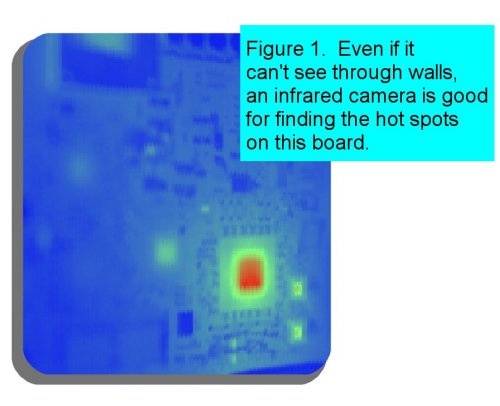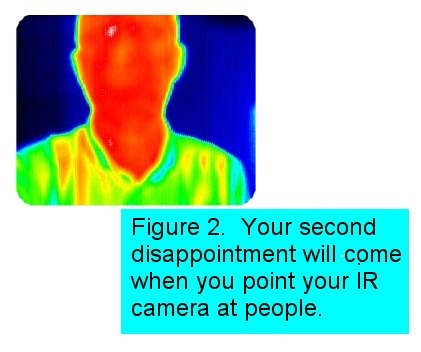|
answers to those doggone thermal design questions
by tony kordyban
dear tk,
i got stuck with the job of getting quotes for the ventilating/air conditioning system for the new computer room. it will be filled with network routers and servers and such. all the power for that stuff is given in watts, but all the air conditioners seem to be rated in btus per hour, or tons, even! where can i find the special air conditioners for computer equipment that can handle watts?
cheesed-off in chesterton
dear cheese,
yes, there are special air conditioners for watts. they are made for every country in the whole world except the united states. u.s. state and federal laws prohibit the sale and manufacture of any products that work with the metric system. you may have noticed that illegal drugs like heroin are the only products sold by the kilogram within u.s. borders. to protect the fledgling u.s. air conditioning industry, everyone is required to use good old american units, like the btu (british thermal unit), or the ton. the ton is based on the cooling power of a ton of melting ice. in the old days large public buildings were cooled by blowing air across carloads of ice cut out of lakes the previous winter. now that's a standard anyone can relate to.
for a while these laws put the electric power industry in a quandary. there just weren't any non-metric units for electricity. (of course, there was the "eel", the unit of electric power generated by an adult south american electric eel when scared by its reflection in a mirror, but it failed to catch on.) but they soon were able to comply with the federal laws by billing customers in kilowatt-hours, instead of the much simpler standard metric unit of energy, the joule.
the way i see it, you have three choices:
1. find some old computers that work in btus. i think eniac was rated that way.
2. smuggle in some algerian or tahitian air conditioners that work in watts.
3. implement a little-known power conversion process that i found in a mechanical engineering handbook, using a calculator if you really need to:
1 watt = 3.4121 btu/hour
1 ton = 12,000 btu/hour
1 ton = 3,517 watts
just don't let the fbi find out you're using it.
you can also use the unit conversion system provided by flomerics at https://www.coolingzone.com/design_corner.php.
you will have to login first in order to access the design corner.
honorable kordyban, sir,
attaching thermocouples to component after component seems like such a bore. remember the movie "robocop"? he could switch to infrared mode and see bad guys right through brick walls, because of their body heat signatures. i know "robocop" was only science fiction (science has yet to figure out how to install a human brain in a police officer), but i have seen ads for infrared cameras specifically for testing electronic assemblies. they cost a bunch, but couldn't i save time by using one to snap a picture of my board while it's running inside its chassis? i could measure every temperature, including the inlet and exit air, with no messy wires or glue in about 10 seconds flat, and have a pretty picture for my report to boot. isn't that how we should do it in the 21st century?
c. kent in metropolis
dear clark,
next to the watts-into-btus question, the one i get most frequently is, "can that infrared camera of yours see through, uh, stuff?" and by "stuff" what they mean is "the opposite sex's clothes."
infrared cameras can be extremely useful tools for the thermal engineer. i use mine all the time. it is great for identifying hot spots on circuit boards, and can even help you find a short in a printed circuit board. but you are assuming that it can do a couple of things that it just can't.

for one thing, infrared radiation, unlike x-rays, can hardly pass through anything. my ir camera can't image anything through a sheet of paper or window glass, let alone the aluminum, steel or plastic walls of an electronics chassis. it can only see the surfaces of solid objects, just like an ordinary camera. as figure 2 clearly shows, it is not much good at looking through brick walls or people's clothes. so you won't be able to use it to measure the temperature of your components while they are mounted inside the chassis.

you can measure temperatures with the board sitting out on a bench, or if you cut a large hole in the side of your chassis so that the camera can see in. but then it is highly unlikely that the air flow will be the same as when the board is operating inside the chassis, so the component temperatures won't be realistic. you will still need thermocouples, or some other kind of sensor, to get component temperatures under realistic operating conditions.
the other problem with your scenario is measuring air temperature. air is pretty much transparent to the infrared camera. that is good news and bad news. good, because if air were not transparent, the only thing you could see with such a camera would be the layer of air right in front of the camera lens. bad, because you can't sense air temperature with it at all. point your ir camera at your hot soldering iron all day. you will not see a red-colored plume of hot air rising from it.
your third premise is right on the money, though. infrared cameras do produce fascinating color pictures that impress the latte right out of the mba-types in the office. and that by itself makes them worth every penny of their purchase price.

about tony kordyban
tony kordyban has been an engineer in the field of electronics cooling for different telecom and power supply companies (who can keep track when they change names so frequently?) for the last 20 years. maybe that doesn't make him an expert in heat transfer theory, but it has certainly gained him a lot of experience in the ways not to cool electronics.
he does have some book-learnin', with a b.s. in mechanical engineering from the university of detroit and a master’s in mechanical engineering from stanford. in those 20 years tony has come to the conclusion that a lot of the common practices of electronics cooling are full of baloney. he has run into so much nonsense in the field that he has found it easier to just assume "everything you know is wrong" (from the comedy album by firesign theatre), and to question everything against the basic principles of heat transfer theory.
tony has been collecting case studies of the wrong way to cool electronics, using them to educate the cooling masses, applying humor as the sugar to help the medicine go down. these have been published recently by the asme press in a book called, "hot air rises and heat sinks: everything you know about cooling electronics is wrong." it is available at https://www.amazon.com/hot-air-rises-heat-sinks/dp/0791800741. this advice column is an extension of that educational effort.
|